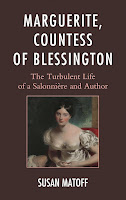Jacopo Tiepolo - Doge of Venice
Ruler laid down the law and granted land for beautiful churches
Jacopo Tiepolo, the Doge who granted the land for the building of the Basilica di Santi Giovanni e Paolo and the Basilica di Santa Maria Gloriosa dei Frari, died on this day in 1249 in Venice. His election as Doge in 1229 had sparked a feud between the Tiepolo and Dandolo families, which led to the rules being changed for future elections. He also produced five books of statutes setting out Venetian law which was to change life in Venice significantly, bringing a raft of civil and economic regulations to which Venetians were obliged to adhere. Tiepolo, who was also known as Giacomo Tiepolo, had previously served as the first Venetian Duke of Crete and had two terms as podestà – chief administrator - in Constantinople. He acted as the de facto ruler of the Latin Empire, negotiating treaties with the Egyptians and the Turks. Read more…
__________________________________
The Great Fire of Rome
City devastated by nine-day blaze
Almost two thirds of the ancient city of Rome was destroyed in the Great Fire of Rome, which took hold on this day in 64 AD. Accounts vary as to whether the blaze began on July 19 or on the evening of July 18. What seems not to be in doubt is that the fire spread uncontrollably for six days, seemed to burn itself out, then reignited and continued for another three days. Of Rome’s 14 districts at the time, only four were unaffected. In three, nothing remained but ashes and the other seven fared only marginally better, with just a few scorched ruins still standing. Among the more important buildings in the city, the Temple of Jupiter Stator, the House of the Vestals, and the emperor Nero's palace, the Domus Transitoria were damaged or destroyed, along with the part of the Forum where senators lived and worked. Read more…
Cesare Cremonini - philosopher
Great thinker famous for Galileo ‘denial’
The philosopher Cesare Cremonini, the contemporary and friend of Galileo Galilei who famously refused to look at the Moon through Galileo’s telescope, died on this day in 1631 in Padua. Cremonini was considered one of the great thinkers of his time, a passionate advocate of the doctrines of the ancient Greek philosopher Aristotle. He was paid a handsome salary by his patron, Alfonso II d’Este, the Duke of Ferrara, and kings and princes regularly sought his counsel. He struck up a friendship with the poet, Torquato Tasso, while he was studying in Ferrara, and met Galileo in 1550 after he was appointed by the Venetian Republic to the chair of the University of Padua. The two built a relationship of respect and friendship that endured for many years, despite many differences of opinion, yet in 1610 a divergence of views on one subject created an impasse. Read more…
_______________________________________
Petrarch – Renaissance poet
Writer whose work inspired the modern Italian language
Renaissance scholar and poet Francesco Petrarca died on this day in 1374 at Arquà near Padua, now renamed Arquà Petrarca. Known in English as Petrarch, he is considered to be an important figure in the history of Italian literature. He is often credited with initiating the 14th century Renaissance, after his rediscovery of Cicero’s letters, and also with being the founder of Humanism. In the 16th century, the Italian poet Pietro Bembo created the model for the modern Italian language based on Petrarch’s works. Petrarch was born in Arezzo in Tuscany in 1304. His father was a friend of the poet Dante Alighieri, but he insisted that Petrarch studied law. The poet was far more interested in writing and in reading Latin literature. Petrarch’s first major work, Africa, about the Roman general, Scipio Africanus, turned him into a celebrity. Read more…
_____________________________________
Book of the Day: Venice: Pure City, by Peter Ackroyd
The Venetians’ language and way of thinking set them aside from the rest of Italy. They are an island people, linked to the sea and to the tides rather than the land. This work from the incomparable Peter Ackroyd, like a magic gondola, transports its readers to that sensual and surprising city. His account embraces facts and romance, conjuring up the atmosphere of the canals, bridges, and sunlit squares, the churches and the markets, the festivals and the flowers. He leads us through the history of the city, from the first refugees arriving in the mists of the lagoon in the fourth century to the rise of a great mercantile state and its trading empire, the wars against Napoleon, and the tourist invasions of today. Everything is here: the merchants on the Rialto and the Jews in the ghetto; the glassblowers of Murano; the carnival masks and the sad colonies of lepers; the artists - Bellini, Titian, Tintoretto, Tiepolo. And the ever-present undertone of Venice’s shadowy corners and dead ends, of prisons and punishment, wars and sieges, scandals and seductions. Venice: Pure City is a study of Venice much in the vein of his lauded London: The Biography. History and context are provided in each chapter, but Ackroyd’s portrait of Venice is a particularly novelistic one, both beautiful and rapturous.Peter Ackroyd is the award-winning author of Thames; London: The Biography; Albion: The Origins of the English Imagination; Shakespeare; acclaimed biographies of T. S. Eliot, Charles Dickens, William Blake, and Sir Thomas More; several successful novels; and the series Ackroyd’s Brief Lives.
.jpg)


.jpg)




%20(1).jpg)
.jpg)


%20(1).jpg)








